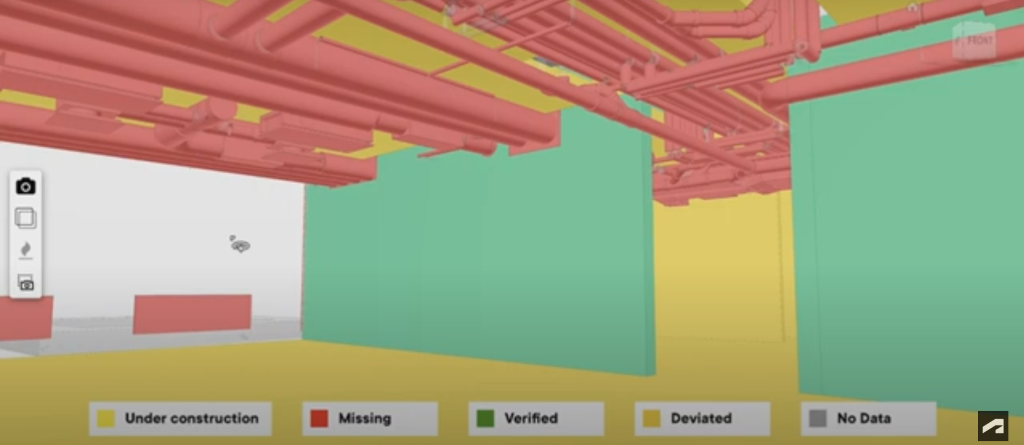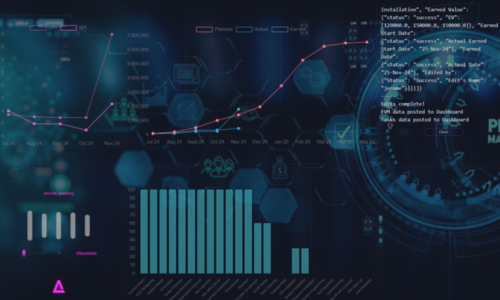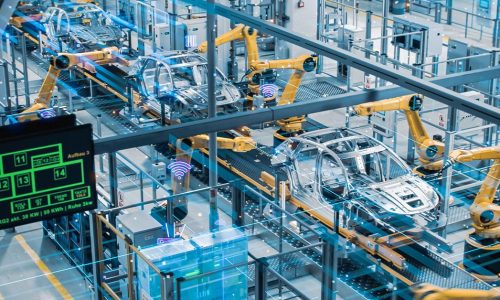6G is expected to run initial trials by 2028 and deployment around 2030. Technically, 6G will deliver mind-boggling speeds of up to 1 terabit per second (Tbps)—100 times faster than 5G, faster than existing fiber networks. It will operate in the terahertz (THz) frequency spectrum, which allows for much higher data rates but also requires new antenna designs and infrastructure to manage its shorter range.
Each advancement in mobile communication transcends mere enhancements in speed. It represents a shift in the way we work and communicate .
- 1G (1980s): The era of “walk and talk” where we can communicate without being tethered to a wall.
- 2G (1990s): SMS proliferated asynchronous communication on mobile devices.
- 3G (2000s): Mobile internet gave us access to global information at our fingertips.
- 4G (2010s): Mobile Streaming services transformed the way we consume and share content.
- 5G (2020s): IoT enables ultra-fast and low latency connecting smart homes, autonomous vehicles, and more.
While we are still going through the 5G Hype Cycle, the perception is that IOT and has not lived up to expectations. For example, IOT together with 5G was meant to revolutionise Smart City and Smart infrastructure. But these ambitions remain unfulfilled…
Except that’s not entirely true.
Sure… some cities are smarter than others. When people think of smart cities, they conjure up the image of data everywhere augmented reality with ubiquitous facial recognition and targeted advertising. But they are much more nuance. A smart city leverages IOT and ITC to enhance the quality of life for its residents by improving operations and efficiencies. Much of which is invisible. It isn’t like a new iPhone that have glitzy launch events. It’s designed and implemented over time. It succumbs to the hedonic treadmill effect just like everything else. As of 2020, China has taken the lead in the race to smarten up cities through digital and infrastructural advancements[1]. IOT is now common place across many industries, from logistics and process automation to manufacturing and healthcare[2 3 4]. Much of the incremental innovations are invisible to most people’s everyday life. But you can see glimpses of it. Not that long again, Vodafone ran an advert boasting uninterrupted mobile phone calls on the road. We can now order anything online and have it delivered within 24 hours. We can control smart homes from anywhere in the world. The list goes on.
So what can we expect from 6G?
The convergence of technology from the end of this decade will undoubtedly drive significant advancements toward intelligent, self-managing systems. It’s a shift from connecting devices to creating environments where AI, automation, and real-time data processing has the capacity to reshape the way we live and the way we work.
Impact on Construction Management
The construction industry is often cited as lagging behind other industries in terms of digitisation. A Harvard Business Review article[5] notes that the construction industry is frequently seen as “the industry that technology left behind.” In my humble opinion, this statement perhaps mischaracterises the reality somewhat, as there have clearly been innovations across this multi-disciplinary industry, from BIM/CADCAM and Virtual Reality, to drones for laser scanning and site survey. Strives have been made in modular architecture, genetic algorithms, 3D printing, self-healing concrete, carbon-sequestering materials, piezoelectric tiles… But it is perhaps fair to say that the construction industry in general doesn’t lend itself to digital innovation.
There are many reasons for this. A construction project typically employs many, sometimes hundreds of subcontractors of different trades, many of which are traditionally low-tech. Digital transformation is just cost prohibitive and impractical. Additionally, since a construction project is built once, it is difficult to leverage the economy of scale. In manufacturing say, if you reduce tak time or defects through automation by a couple of percentage points, the ROI is calculable and measurable.
An interview with MACE suggests that general contractors can spend up to 50% of resources on litigation. This might sound like a lot, but if you consider how much time and labour is spent on the administration of contracts, including commercial management, QS, inspections, surveys, contingencies and general risk management, this may not be surprising if you exclude engineering and materials in the estimation.
There is a growing appetite to modernize construction management through digital technology to reduce overhead and improve efficiencies. The convergence of the mass adoption of AI and the next generation of high-speed mobile communication, will render digitization and data integration to be more accessible and cost-effective.
The impact will be multi-faceted. Here are four use cases, which we anticipate significant innovation within construction management in the coming years.
Verification
Verifying objectively whether something has been built correctly is both challenging and cost-prohibitive. Contractors typically conduct surveys, spot checks, and visual inspections of deliverables, but these methods often lack the granularity needed to capture the entire scope of a project accurately. To mitigate this, a significant portion of the project budget is allocated for contingencies, addressing uncertainties such as excess materials, extended schedules, and inefficient labor use. Decisions frequently rely on the experience of a small number of individuals, which can lead to inconsistent outcomes.

Data capturing technology already exists, such as Leica’s BLK2GO, allowing site teams to capture detailed information efficiently. Coupled with machine learning algorithms and BIM information, it is now possible to automatically identify whether something is built to within tolerance, out of tolerance, under construction or missing.
With the advent of 6G technology, the convergence of these capabilities will allow for real-time or near-real-time data capturing, processing, and visualization. This will empower construction teams to make critical decisions based on precise and timely information.
Digital Twin
The concept of a Digital Twin, a virtual replica of a physical asset, has been around for some time, but its full potential has yet to be realized in many industries. Creating and maintaining a digital twin has been a labor-intensive process, often limited by bandwidth constraints, data processing capabilities, and the lack of real-time data integration. As a result, many Digital Twin implementations have fallen short of expectations, offering limited insight and interactivity.
As we’ve seen, with 6G, machine learning, and advanced data-capturing technologies, we can achieve real-time or near-real-time monitoring of site conditions, enabling precise verification of progress and deliverables. This continuous and autonomous evolution of the Digital Twin, based on site progress eliminates the need for separate as-builts and BIM updates, thus creating a dynamic model of the project that can be handed over as an asset for facility management and maintenance. This Digital Twin can then be used to continuously monitor the performance of the building throughout its lifecycle.
Project Management
One of the most significant benefits of combining AI with 6G is the potential to drastically reduce administrative tasks. Instead of manual data entry and writing reports, AI agents can automatically capture, process, and analyze real-time data and activities from site.
With AI, project updates and compliance reports can be generated automatically, providing stakeholders with accurate insights with minimal manual intervention. Site teams and project managers spend up to 15% of their time doing data entry and writing reports. AI implementation in construction could reduce administrative overhead by over 50%. This not only saves time but also reduces the risk of human error, ensuring that all data is reliable and up-to-date.
Inventory and Materials Management
The transformative potential of 6G lies in its capacity to deliver vast amounts of data in real-time to facilitate AI and analytics capabilities. This will have a significant impact to enhance inventory and materials management by reducing data and information administration overheads.
For instance, smart inventory tracking systems can leverage real-time analytics to predict material requirements more accurately. AI agents together with mobile computer vision and high-resolution scanning technology can monitor inventory levels together with supply chain information and project schedule to avoid the need of overstocking and the pitfall of understocking. Additionally, real-time site monitoring allows teams to track the exact location and condition of materials, ensuring that resources are utilized efficiently and effectively.
The Bottlenecks
Of course, there will challenges. The speed of adoption will depend on the development of AI technologies in the coming decade. According to a McKinsey[6] report, by 2030, realised demand for generative AI is about 70% for B2C and 30% for B2B. Unlike ChatGPT or Sora, construction projects are one offs. As a result, there could be a lack of publicly available training data to develop reliable AI implementations. Moreover, the industry has an opaque culture for information sharing, compounding the problem that adds friction to innovation. For example, you won’t be able to open up an AI article without reading about predictive analytics. The natural conclusion is that AI and machine learning will be able to support construction management to predict, for example, risks. But since there is a lack of training data, this may not be a reality soon.
Additionally, delivering a vast amount of data over the mobile network is one thing, being able to process it is another. According to a McKinsey7 analysis, it is unclear that within the next decade, AI solutions will be able to solve complex problems in a manner to generate sufficient value for mass B2B adoption. “Disruptive hardware architectures will substantially reduce cost and accelerate adoption”, but the uncertainty around speed of adoption remains unclear.
But the hope is that, with the continual development of IOT and AI in the next 5 years, their convergence with 6G roll out from 2030 onwards will likely see an escalation of B2B AI adoption in the decade to follow.
References
- Smart cities in China – statistics & facts | Statista ↩︎
- IoT | Innowise Case Studies ↩︎
- Customer Cases Booklet | Telenor IoT ↩︎
- The top 10 IoT Use Cases (iot-analytics.com) ↩︎
- Can the Construction Industry Be Disrupted? (hbr.org) ↩︎
- AI in semiconductor manufacturing: The next S curve? | McKinsey ↩︎
- AI in semiconductor manufacturing: The next S curve? | McKinsey ↩︎











